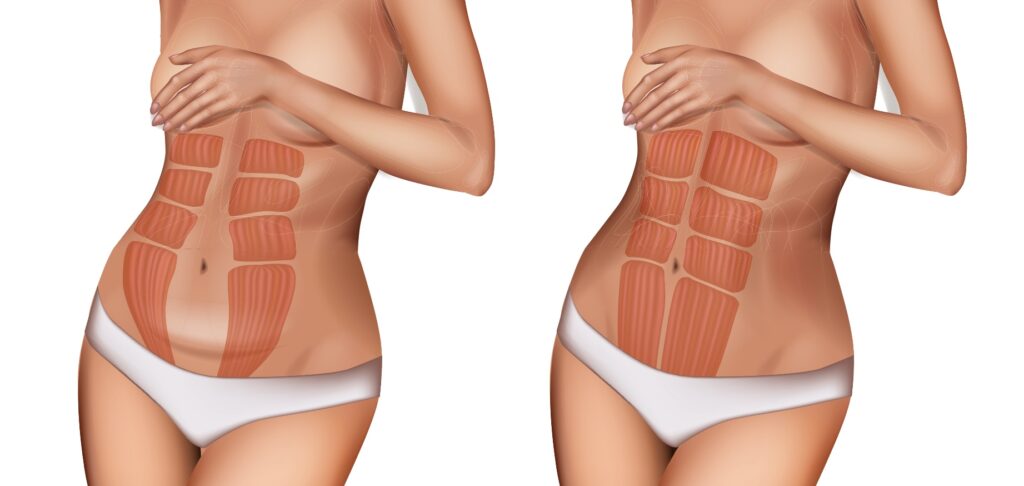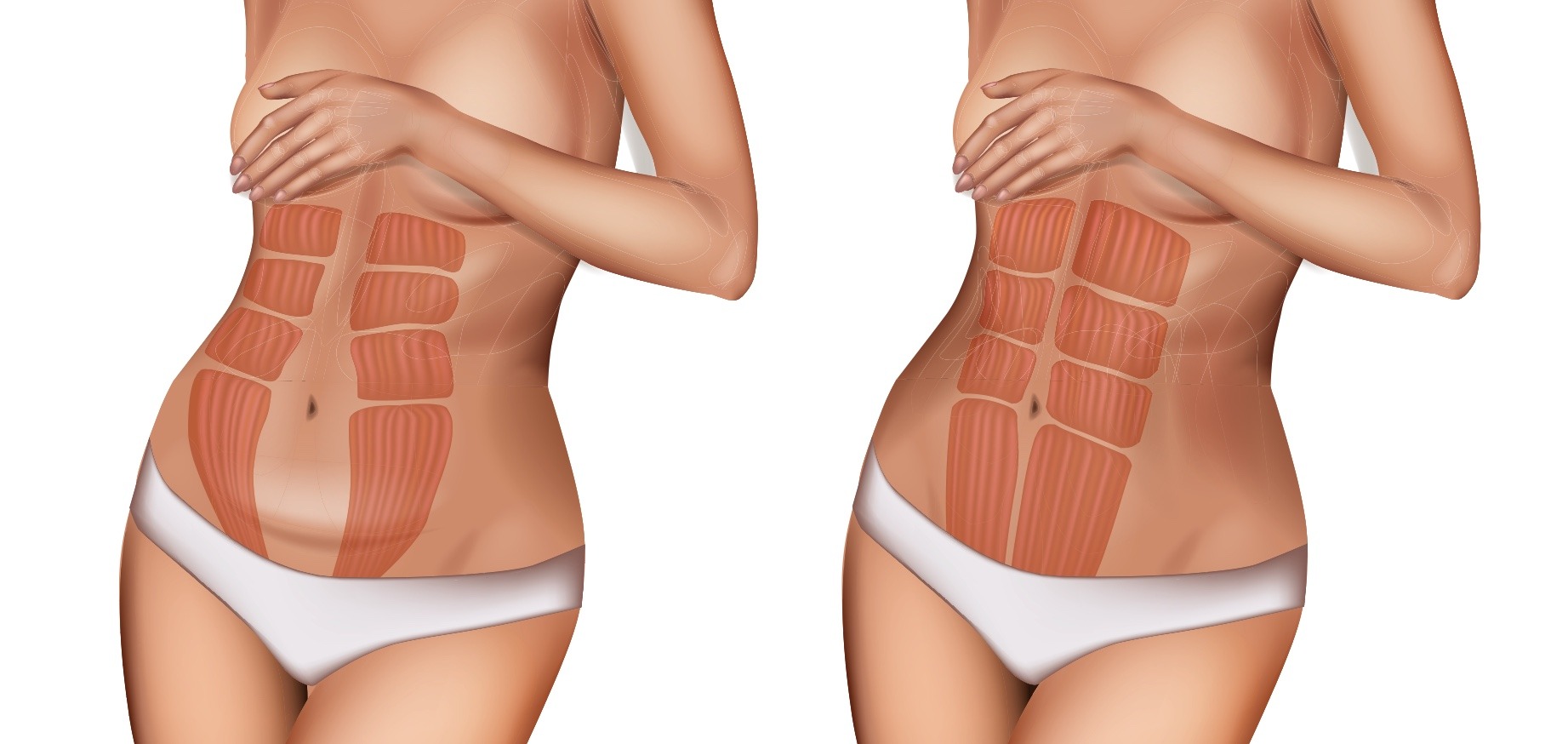
What is Diastasis Recti?
Diastasis Recti (DR) is the thinning of the midline between the two sides of the rectus muscle (six pack). The line consists of connective tissues that connects all of the abdominal muscles in the middle!
During pregnancy that midline has to stretch to allow the baby to grow! So it’s a good and normal thing to happen.
However the wrong execution of exercises or movement pattern can make a diastasis recti worse and cause issues with the healing once you have delivered your baby.
How is a diastasis recti measured?
Generally we measure the width and depth between the two sides of the six-pack muscle (abdominus recti). Technically anything over 2,5fingers of widths counts as diastsis recti. The connective tissue in the middle should feel like a trampoline, your fingers shouldn’t sink in.
However, it is also important to check the diastasis recti in all kinds of movements, to see where you are compensation or where the load caused during movement gives you issues.
Some women do not have a gap, but still have a belly pouch, which is caused by an imbalance between the Transversus abdominus and the Rectus abdominus.
Sidenote : Checking with fingers is only somewhat accurate. Ultrasound is the gold standard. (Van de Water & Benjamin, 2016)
My friend Alexandra Schäfer, is a women’s health physio and speaks fluent English. She can provide ultrasound services:
https://becken-balance-physiotherapie.de (unpaid advertisment)
Prevalence
60 % of women do have a DR at 6 weeks postpartum, and 32% at 12 months postpartum. (SPERSTAD et al.,2016)
100% of women have a DR at due date, and 39% at 6months postpartum (MOTA ET AL., 2015)
What does treatment with me look like?
From working for almost 8 years in women’s health, I have collected a lot of experience of working with women with diastasis recti. What I learned most and for all, there is NO ONE SIZE FITS ALL.
Diastasis recti rehabilitation has to be as individual as you are.
The rehabilitation has to be a whole body issue, where we look how do you move in every day life, how do you lift your children, what other movements or workouts do you do and what are your goals?
I have come away from saying those are the ‘good’ or the ‘bad’ exercises. As this simply creates a fear around the whole subject. My goal is to get you strong and moving. And enjoy the activities that make you happy.
First Step is learning how to breath. To reach good breathing patterns sometimes it needs a massage, it needs lots of regular practise as well as learning to let go and stretching of tight areas.
Second Step is learning how to get your whole core to work together. That includes the diaphragm, the abs, the pelvic floor and the lower back muscles.
Third step is to start moving in easy movements.
Fourth step is to get you into functional exercises/movements that will get you strong and feeling better for every day life! We will look at your whole body, as diastasis recti is a whole body issue! Sometimes the key to getting back is not what you thought it would be. So we will work together to make your individual plan.
How long will it take, until I see improvements?
As already mentioned, rehabilitation is very individual. Depending on the initial situation and complaints, the length can therefore not be predicted.
My program initially lasts 12 weeks, but can then be extended if necessary.
The healing of a large RD can take up to 2 years. Because fascia changes very slowly.
How to get in touch and start you own rehabilitation
You can book your appointment here!
I am looking forward to working with you,
Dori

